Recent Articles
Popular Makes
Body Types
2017 Hyundai Ioniq EV Road Test and Review
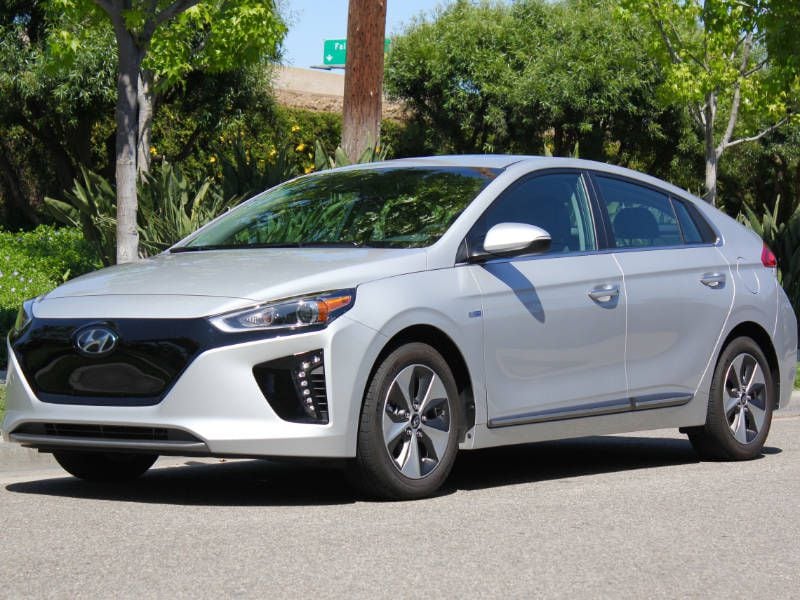
2017 Hyundai Ioniq EV Front Quarter ・ Photo by Miles Branman
As charging infrastructure expands, battery technology improves, and America’s population continues to move towards urban centers, pure electric vehicles will face fewer obstacles to mass adoption. Hyundai and several other mainstream automakers have recognized these trends and are filling dealerships with innovative electric vehicles at attractive prices.
The all-new 2017 Hyundai Ioniq hatchback competes with alternative energy vehicles across three segments: traditional hybrid, pure EV, and plug-in hybrid (PHEV). This multi-front offensive gives customers plenty of options based on their lifestyle. Those with long commutes will gravitate towards the gas-electric hybrid. City dwellers and those with brief commutes will benefit from a PHEV’s short all-electric range.
The all-electric customer is traditionally an urbanite or has a second vehicle that isn’t subject to range restrictions. However, while federal and state tax breaks are still in play, a broader group of new car buyers may consider pure EVs.
Powertrain
The Ioniq Electric is powered by an 88-kWh electric motor and 28-kWh lithium-ion polymer battery. 118 hp and 215 lb-ft of torque is sent to the front wheels via a single-speed automatic transmission. Hyundai hasn’t released a 0-to-60 mph time, but independent sources estimate an 8.0-second run. Top speed is limited to 90 mph. Electric vehicles are attractive for many reasons, but the rush of instant torque is among our favorite perks. At a respectably light 3,164 pounds, the Ioniq EV surges forward from every stoplight and has enough juice to make safe passes on the highway. The Ioniq comes standard with three drive modes: Eco, Normal, and Sport. Each mode adjusts throttle mapping to a noticeable degree, but regardless of mode, burying the gas pedal too often will drain the EV’s battery pack quickly.
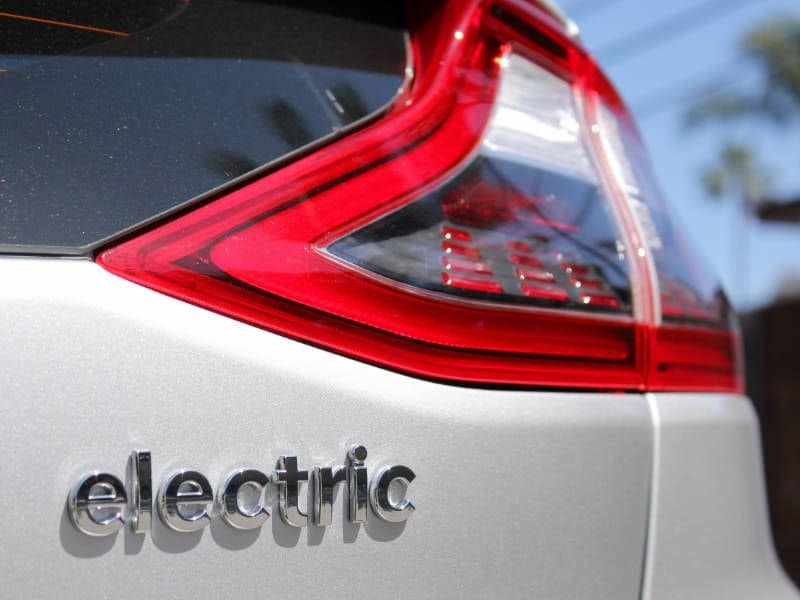
Photo by Miles Branman
MPGe and Electric Range
Ioniq Electric boasts best-in-class miles per gallon equivalent (mpge) ratings in city, highway, and combined driving conditions: 150/122/136. With the Ioniq Electric’s 124 miles of range per charge, we didn’t need to plug in during the day, and usually had range to spare. Our even mix of highway and city driving (almost entirely in Eco drive mode) returned 122 mpge – slightly off the pace of Hyundai combined estimate. Beyond drive modes and throttle regulation, Hyundai gives drivers control of braking regeneration to maximize range. Paddles mounted to the steering wheel flip through four levels of regen. Level 0 maintains vehicle momentum, meaning braking is the only way to recover energy, but Level 3 could almost replace the brake pedal – once you’re off the gas, the vehicle hurries to a stop. Hyundai claims the Ioniq EV will recharge 80 percent of its battery in just 23 minutes when hooked up to a DC fast charger. If you can access 240 volts at home, you’ll have topped off in 4 hours, but a standard 120V plug could take over 8 hours to fully charge the pack from "empty."
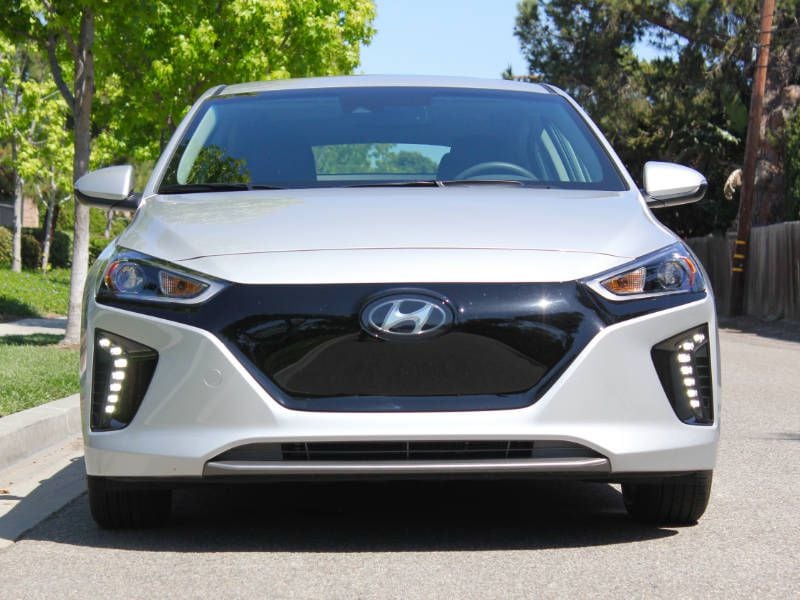
Photo by Miles Branman
Stability and Handling
As with most other EVs (Teslas being a marked exception), the Ioniq Electric’s battery pack is mounted beneath the rear seats. While this position doesn’t lower the car’s center of gravity like floor-mounted packs, the Ioniq handles quite well. The front axle uses a MacPherson-strut setup and the rear axle uses a torsion beam. Combined with 205-section Michelin rubber, the Ioniq feels planted in corners. In most situations, the tires are the limiting factor to the Ioniq’s mechanical grip, panicking the traction control system prematurely. The Ioniq’s electronic steering system is a mixed bag: weight and response are excellent, but on the highway, the system is overly sensitive, requiring constant micro-adjustments. In addition to competent handling, the Ioniq Electric offers a smooth and well-damped ride. Be it speed bumps or potholes, the Ioniq absorbs surface shocks to keep the cabin stable.
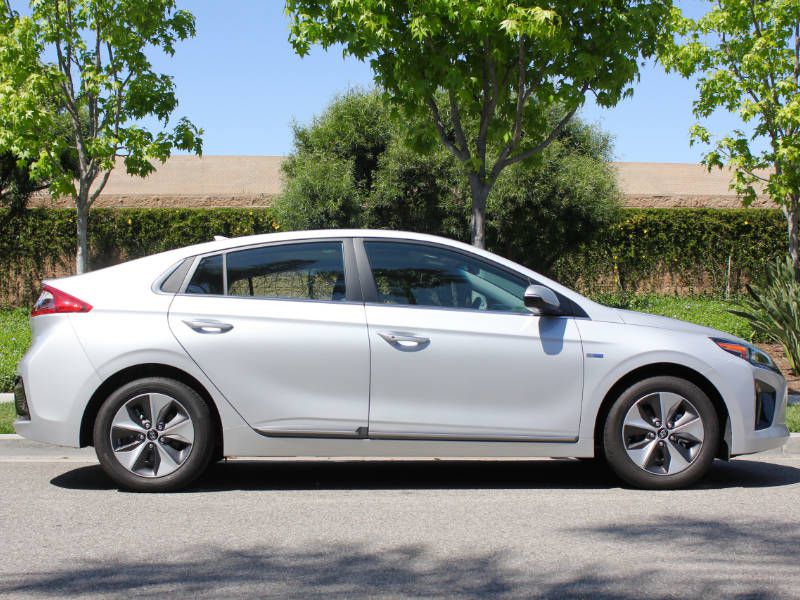
Photo by Miles Branman
Exterior Styling
Apart from a few “Blue Drive” badges and an “electric” nameplate on the bootlid, the Ioniq Electric looks like any other hatchback. Drivers who like to wear their environmental deeds on their sleeve won’t appreciate the Ioniq’s subtle exterior, but we’d wager most wouldn’t mind blending in. Without the need to cool a gas engine, Hyundai’s corporate hexagonal grille is represented as a solid piece of black plastic with wing extensions stretching beneath each headlight. Boomerang-shaped LED daytime running lights sit at the bottom corners of the front fascia. 16-inch five-spoke blade wheels come standard, as do thin LED taillights. A gradual sloping roofline leads to a tall rear end, creating a silhouette somewhere between a four-door coupe and five-door hatch. The Ioniq Electric won’t turn heads, but its refined exterior is a welcome, mature contrast to the quirky EVs we know and (mostly) tolerate.
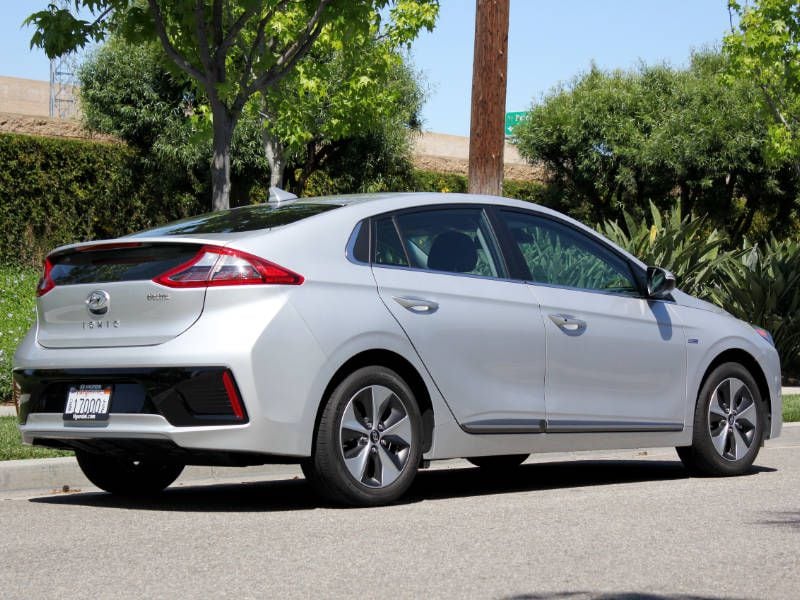
Photo by Miles Branman
Interior Comfort
Inside, the Hyundai Ioniq Electric uses high-quality materials in an ergonomic layout to create a spacious, comfortable cabin. In particular, we appreciate the brushed metal surfaces covering the door handles, gear selector buttons, steering wheel arm, and dashboard trim. Limited Ioniq models apply soft leather to the steering wheel, seats, center console and door panels. The front chairs are well bolstered and supple, but lack adequate thigh support for long-legged adults. Rear occupants have generous leg and headroom, along with their own air vents. With the 60/40 split folding rear bench in place, the Ioniq Electric has 24 cubic feet of cargo space. To put that in more practical terms, we’re able to fit two large suitcases and two backpacks without disturbing the rear seats.
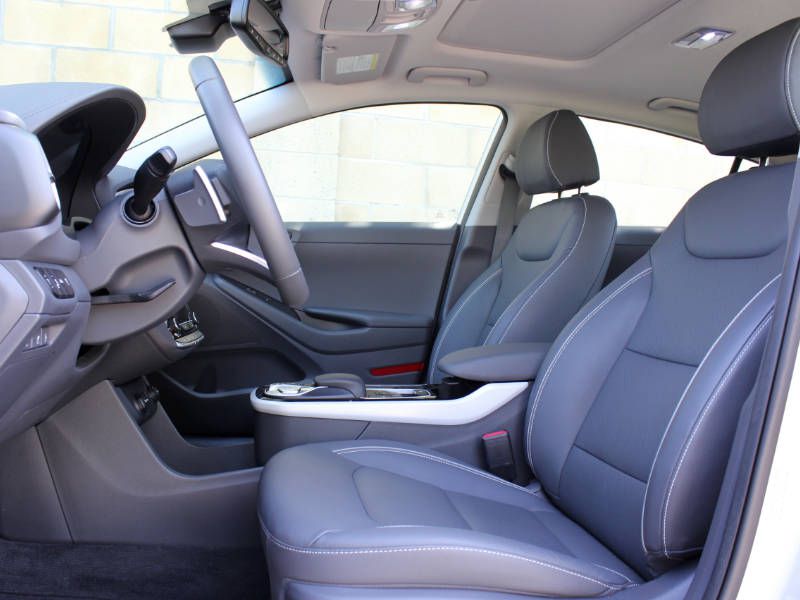
Photo by Miles Branman
Convenience and Safety Features
A 7.0-inch digital driver display and 4.2-inch thin-film transistor (TFT) instrument monitor show energy distribution, battery life, and other telemetry data in high resolution. A center-mounted 7.0-inch infotainment system with Apple CarPlay and Android Auto is simple to use, but smaller than most competitor units and of lower resolution. An available 8.0-inch monitor sharpens the graphics and adds navigation. Every Ioniq Electric ships with seven airbags, ABS, automatic headlights, electronic stability control, a rearview camera, and driver blindspot mirror. The Limited package adds emergency braking with pedestrian detection and lane departure warning with rear cross-traffic alert. The Unlimited package rounds off the driver aids with lane keeping assist, adaptive cruise control, and dynamic bending lights (pivoting headlights). The Ioniq has a solid list of safety goodies, but we’re scratching our heads that auto-braking – the best automated line of defense to mitigate or avoid a major incident – isn’t standard on either base or Limited trims. The NHTSA has not yet given the Ioniq a safety rating, but we’d expect five stars and an IIHS Top Safety Pick given Hyundai’s track record for building safe products.
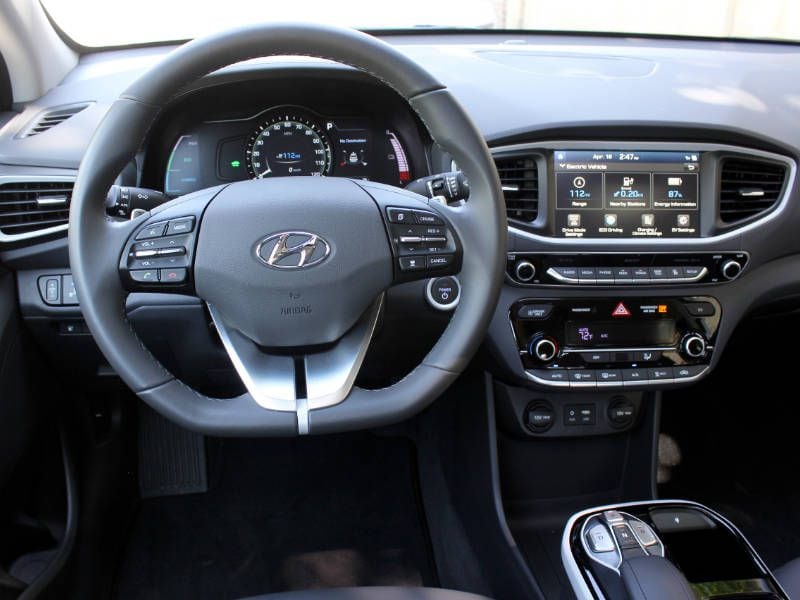
Photo by Miles Branman
Pricing and Packages
As with other alternative energy models, Hyundai loads its Ioniq Electric with plenty of standard equipment. Base models start at $30,335 and Limited trims add $3K to the price tag (including destination fees). Highlights of the base trim include LED daytime running lights, proximity door locks, push-button ignition, automatic headlights, automatic climate control, power windows with auto driver’s window, heated front seats, 2 USB ports, Bluetooth, HD radio, Apple CarPlay, Android Auto, and a 3-month Sirius XM trial. The Limited trim adds Leather seats, an auto-dimming rearview mirror, LED headlights, auto front passenger windows, power folding side mirrors, and chrome door handles. An Unlimited package is available on the Ioniq Electric Limited for $3,500. Features include the aforementioned driver aides, a power moonroof, an Infinity 8-speaker premium audio system, wireless phone charging, Blue Link guidance for three years, and dynamic headlights. Every Ioniq includes an industry-best 10-year/100,000-mile powertrain warranty and 5-year/60,000-mile new car warranty.
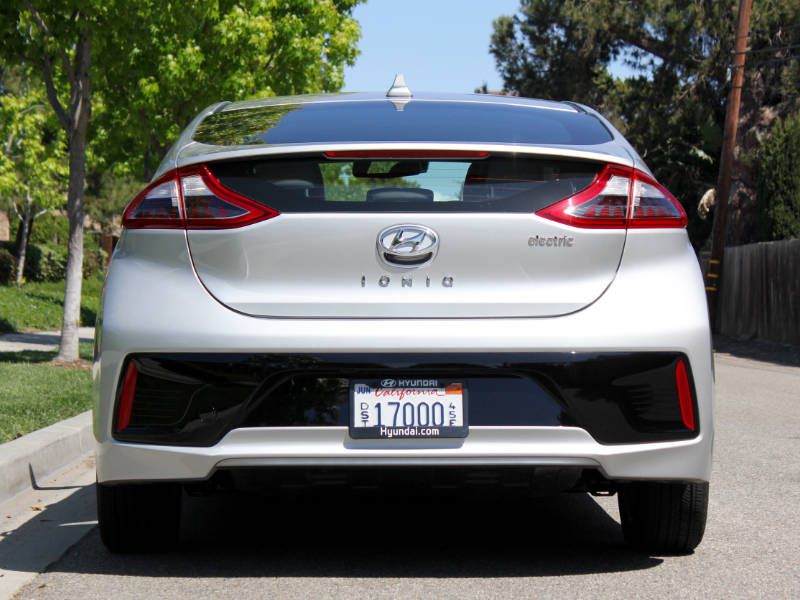
Photo by Miles Branman
Highs and Lows
Highs: - Best-in class MPGe - Comfortable ride quality - Understated good looks - Great value Lows: - Over-boosted electric steering - Can’t match the Bolt’s range

Photo by Miles Branman
Competition
The all-electric Ioniq competes with vehicles from Chevrolet, Volkswagen, Ford, BMW, Nissan, Kia, and Mercedes-Benz, but for our purposes, we’ll focus on models with an electric range similar to the Hyundai. With one more mile of range than the Ioniq (125 vs. 124), VW’s e-Golf pairs a 35.8-kWh battery with a 100-kWh electric motor for 134hp and 214 lb-ft of torque. Working in the Golf’s favor is a well-loved platform and a $29,815 starting figure. However, the e-Golf cannot match the Ioniq’s mpge rating (it only manages 119), and is much slower off the line. Certainly the Ioniq’s biggest rival is Chevrolet’s all-new Bolt EV. With an industry-best 238 miles of electric range, the Bolt goes a long way to eliminate range anxiety for most consumers. In addition, the Chevy Bolt makes 200 hp and 266 lb-ft of torque, making it far quicker than the Ioniq Electric and e-Golf. The Bolt’s only handicaps are its $41,780 starting price and below-average cargo capacity.
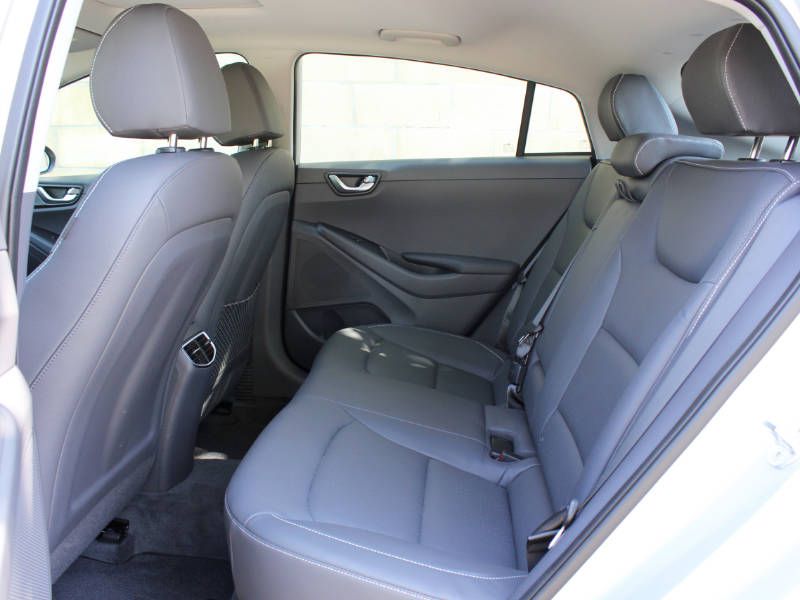
Photo by Miles Branman
Our Take
Presuming you’ve already decided that a pure electric vehicle matches your lifestyle, the next step is to define your priorities. If you’re looking for the most available range (and don’t mind spending thousands more to get it), Chevrolet’s Bolt EV is a compelling option with over 100 miles of extra travel compared to the next closest EV. However, if you desire value above all, the 2017 Hyundai Ioniq Electric combines class-leading mpge, abundant standard features, mature styling, and an unbeatable warranty in an affordable package. We can’t ask for more.

Photo by Miles Branman